If you are interested in mixing your own music and want to set up a home studio, or if you are tying up with a bigger studio space to churn out your own music, you will need the best set of high-quality studio headphones you can afford.
Almost everyone who listens to music on a regular basis owns a set of headphones today but most of these listening devices don’t qualify for what music professionals refer to as studio headphones.
However, with a large number of options available in the market, it can get very confusing to pick one set that will be ideal for your requirements.
To help you through this process, we have put together a thorough studio headphones guide, so keep reading!
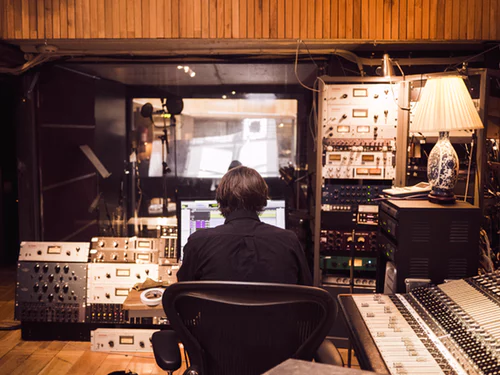
Types of Studio Headphones
There are many different types of headphones that are available for purchase in the market at any given time but how are you supposed to choose between them?
Each of these types is aimed at a different user group because of the different listening experience that they offer.
Let’s look at some of the most popular types of headphones below:
- Over-Ear Headphones — The most commonly used headphones for studio use, these are usually constructed with large — and thick — headbands along with earcups that cover your ears completely. These are ideal for people who want a comfortable fit but also don’t mind a relatively large attachment on their heads. As studio headphones only need to be used in a mixing set, a lot of professionals in the field opt for this option.

- On-Ear Headphones — On-ear sets of headphones are built in a similar manner but have an overall more compact design. They come with smaller ear cups, which will rest on top of the ears but not encompass them altogether. These are ideal for people who are looking for a more compact set of headphones and do not mind compromising on some comfort and bass.
- In-Ear Headphones — Another popular type of headphones or listening devices are in-ear headphones. They are designed exactly how they sound. Instead of resting on the ears like the other two models discussed above, these highly portable headphones come with small earbud tips. These tips are then inserted into the listener’s ears, in the area when the ear canal starts. While these may not be the most comfortable option for many people, there are some in-ear enthusiasts who prefer the extremely portable design — easy to wear even outside. For mixing, however, this style may not be ideal.
Should You Get Studio Monitors or Headphones?
There are two popular pieces of equipment that are used to mix sounds in a recording studio — studio headphones and studio monitors.
While there is a lot of debate over what is better to be used for mixing, a lot of people claim that studio monitors have a definite advantage, sometimes overlooking the benefits that are associated with opting for studio headphones.
While it is true that if you have an acoustically treated room, you will be able to get the most balanced sound by using studio monitors, a lot of people don’t have the budgetary allowances or infrastructure to build a room like this.
With studio headphones, the response is not going to be completely flat, but you can learn the sound profile of the headphones and then use it to your advantage when you mix.
These headphones are relatively much cheaper, give you a more private feel and will not require an acoustic treatment for your room.
The Big Difference Between Studio and Regular Headphones
There is a big difference between concentrating on functionality and getting more out of the listening experience. While studio headphones are specifically designed for sound engineers and try to put out a flat frequency response so that nothing interferes with the sound output, a regular set of headphones may not have the same bunch of characteristics.
Regular headphones are more likely to concentrate on the design of the product and come with a host of other features like wireless connectivity, but they will end up altering the sound of the mix to make it easier on your ears.
With studio headphones, the emphasis is more on the build quality and a neutral sound signature.
In most cases, you will not see these professional pairs of headphones being advertised out of the closed circle of sound or audio engineers.
These headphones are known for their strong construction and can also be used to listen to music, but most regular people may not want to spend that extra money just for that unless they are monitoring or mixing their music.
Closed-Back vs Open-Back Headphones: What’s the Difference?
If you are relatively new to the mixing profession or are just trying it out as a hobby, it is very easy to get overwhelmed by the technical terminology that is sometimes used when people talk about the field. Two such terms are closed-back headphones and open-back headphones, which stand for two different types of headphones that are commonly used by people in the profession.
If they seem new to you, or if you are wondering which of these is a better fit for you, we can help you in the process of selection.
Closed-Back Headphones
These headphones are exactly what the name suggests: instead of having any vents to let in hair or outside noise, these headphones have a sealed back that blocks noise from the outside. As a result of this, you can only hear the sound from the speakers within the headphones.
These types of headphones are made specifically to block out any outside noise, some people may find that the mix that they are listening to will not sound too natural with closed-back headphones.
Additionally, over time, these headphones can end up trapping some heat and making your ears uncomfortably warm and a little sweaty. Despite this, these are great for times when you are commuting or when there is a lot of noise outside.
Ideal For:
- More casual listening
- Listening to music at work or in a place with other people
- Listening to audio as you commute
- Blocking out any outside noise for greater concentration
- Recording or mixing audio files
Not Suitable For:
- Long term listening, as it traps heat around your ears
- A more nuanced and natural listening experience
5 Best Closed-Back Headphones [Reviews & Buyer’s Guide]
Buying quality closed-back headphones is very important if you’re mixing and mastering. We’ve reviewed the best 5 closed-back headphones for 2021.
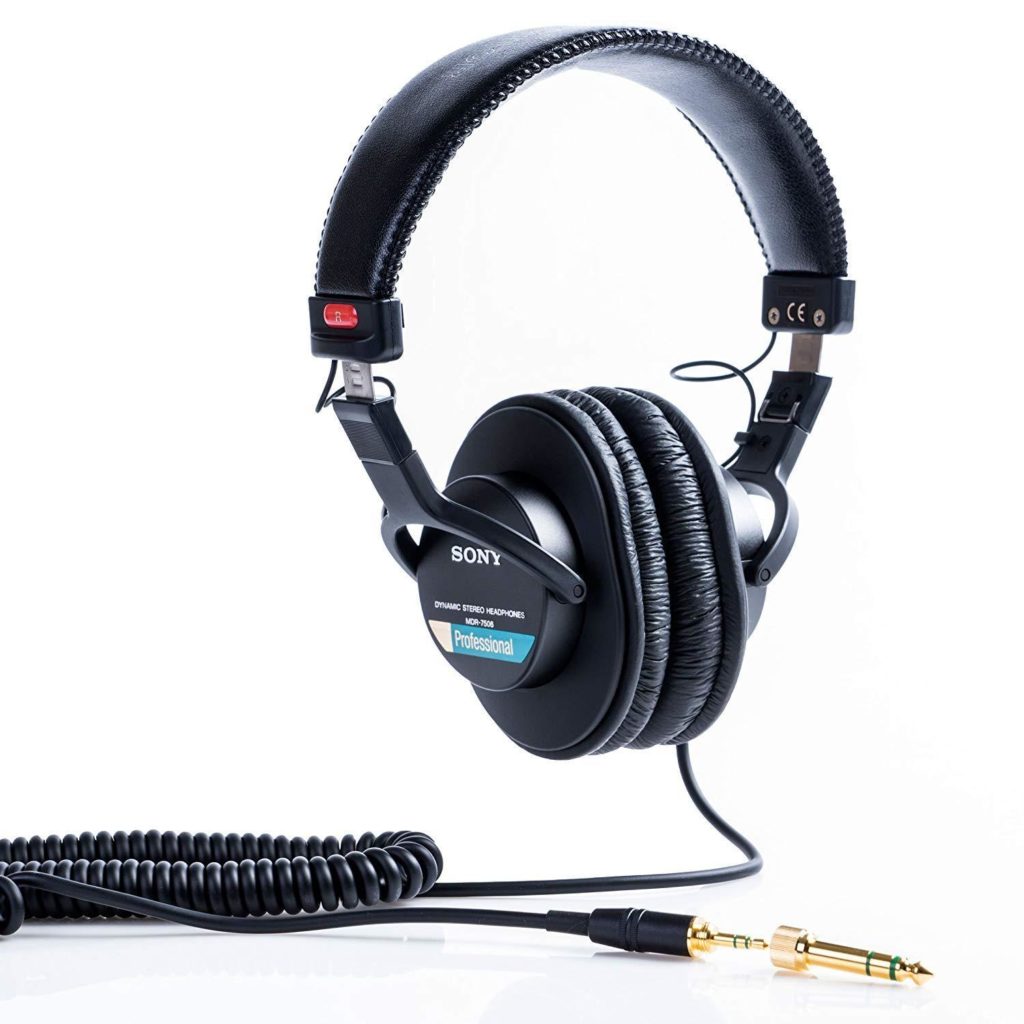
Open-Back Headphones
Open-back headphones are different from the ones we discussed before in terms of their basic construction, as these are specifically designed to let in some air through the ear cups that cover your ears and into the speaker part of the headphones.
This is primarily done to ensure that the performance of the speakers is not affected by the pressure that can sometimes build up in such situations. There is also a small amount of echo, which will not really affect the mixing process. Keep in mind that these headphones do not have the capacity of blocking noise from outside.
Additionally, they also allow for some leakage of sound, which means you will hear what people are saying around you and they will be able to hear what you are listening to.
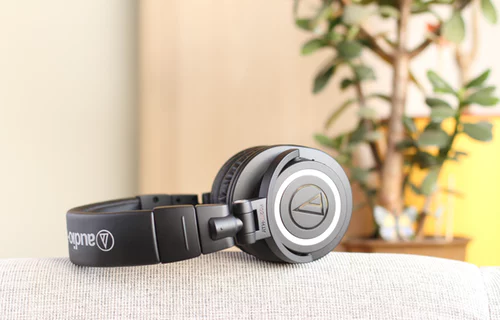
Ideal For:
- Critical listening where you want a true feel of the sound
- Deciphering higher quality of audio files
- Listening to music at home or in enclosed spaces without too much disturbance
Not Suitable for:
- Listening to music at work or on a plane with other people around
- Listening to music on your daily commute to and from places
- People who want all outside noise to be blocked out when they put on headphones
5 Best Open Ear Headphones [Reviews & Buyer’s Guide]
Buying the best quality open ear headphones is very important when you’re mixing and mastering. We’ve reviewed the best 5 open-back headphones for 2021.
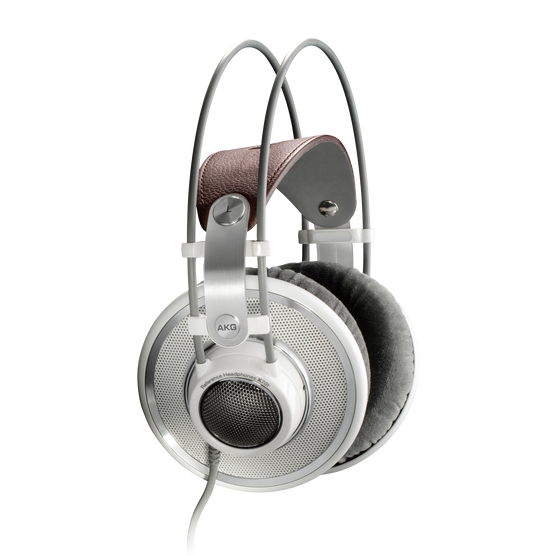
Wireless vs Wired Headphones?
If you look around yourself when you are commuting or even just at work, you will notice that most people are roaming around with headphones that do not have any wires attached anymore.
In the era of wireless technology, most people prefer to go with headphones that they can charge once and then hang around their necks for the rest of the day.
However, as a person who is interested in mixing audio, you need to find out if there is any difference in sound quality between the traditional wired headphones and the newer wireless ones, before making a decision.
While wired headphones may not have the portability and ease of use that is sometimes associated with wireless headphones, they give you access to the one thing that makes the most amount of difference to an audio technician or sound engineer — the quality of sound.
While wireless variants also give decent sound output, there are some issues that still need to be taken care of before these headphones match the wired ones in terms of quality.
Do I Need a Headphone Amplifier?
This is one of those questions that everyone who has bought studio headphones has asked themselves at least once — possibly more than that — in their lives.
But before we actually help you answer this question for yourself, it is important that you understand what a headphone amplifier is and what it does.
What Is a Headphone Amplifier?
Different from the larger amplifiers that are used with other listening equipment, a headphone amplifier is relatively low powered.
The main purpose of getting this amp is to raise the low-voltage audio signal from the source device to a level that it can be converted to soundwaves by your headphones’ speakers.
Essentially, this works in the same way as a regular speaker’s amp, but the scale is much smaller.
How Can It Help?
Digital devices that are manufactured these days come with a headphone amp and a DAC — a digital-to-analog converter that converts digital audio info into a low-voltage signal that an amplifier can work with — which is the reason why you hear sound when the device is plugged in.
The quality of these components, however, can vary greatly, affecting the overall sound quality.
The general consensus is that if you have an average pair of headphones, you’d probably not benefit from investing in a headphone amp, but as the quality goes up, the potential benefits of employing a headphone amp also increase significantly.
What is the Ideal Frequency Response for Headphones?
One of the most important factors that people need to look into while purchasing headphones — regular or studio — is the frequency response range that they have.
Under regular circumstances, the acceptable audible frequency range for headphones is anywhere between 20 to 20,000 Hz, but your personal preferences can make a huge difference to what may be the ideal range for you.
For example, the music genres that you are more inclined towards will be one important deciding factor here.
If bass-heavy music is your kind of music, the bass frequency response is what you will be paying more attention to. At the same time, accuracy, emphasis and a warmer bass are other factors that will help in determining the ideal frequency response for headphones.
Keep in mind that a wider frequency response range doesn’t always translate to better sound quality.
Best Headphone Frequency Response for Specific Genres
In this section, we will be looking at what type of headphones or frequency response works best with different music genres so that you can make a more informed decision about how you’d like your headphones to perform.
- Rock — Rock music, originating in the 1950s United States, is traditionally centered around an electric bass guitar and aggressive drumming. As there are many smaller sub-categories within the genre of rock, you need headphones that are extremely versatile in terms of performance, including open-back, closed-back, supra-aural, circum-aural and others.
- Pop — When it comes to pop music, you don’t need equipment that is too sophisticated when it comes to listening. All you need is a fair bit of accuracy along with a good amount of energy. The bass should be fast, yet controlled, while the rest of the elements should be clear.
- Electronic — Electronic music is what everyone seems to be listening to these days. To get the best listening experience, you need headphones that support fast-paced bass and aren’t too harsh in terms of sound.
- Jazz — Jazz is relatively more complicated when it comes to recording and listening. You need to get the smoothest mids, along with a tight bass and controlled highs.
- Classical — This genre requires a bend towards perfectionism, as you need more and more clarity, accuracy and attention to detail for the richest symphonies.
- Flat — While this doesn’t really qualify as a genre of music, most audio engineers or sound technicians seek out headphones with the flattest response to ensure the highest level of sonic frequency. However, you must keep in mind that there are no headphones that will give you a completely straight frequency curve.
Things to Keep in Mind When Mixing with Studio Headphones
Whether you are new to the process of mixing with studio headphones or have had prior experience in the field, there are always some ways in which you can improve your overall experience of mixing with equipment like this.
In order to make the process more effective and the final product more refined, there are a few tips and tricks that you must keep in mind before or during the process of mixing.
Mixing with Headphones Isn’t the Only Option
Does the final mix that you’ve have spent hours and days mixing turn out to sound like something else altogether when you play it on any other audio platform?
There are many different factors that could be causing this but the primary one is that once the audio leaves the set of monitors that you have used, the room acoustics and different reflections can change the basic composition of the beats that you have put together so painstakingly.
It is important that you realize that different rooms have different characteristics and you will need to audition the mixes in the real world in order for them to be appreciated by people in different settings.
You really need to understand your audience and how they will be listening to your music.
Test mixes in your car, on cheap bluetooth speakers, expensive speakers, airpods, etc.
Stay Neutral in the Face of Headphone Coloration
One important thing that you need to keep in mind is that different models of headphones have different frequency responses, which can make you hear the beats differently.
This phenomenon is also referred to as “coloration”, as it is almost like editing a film with tinted glasses. With some models, the bass frequencies are attenuated unnecessarily, while others may give a boost to the higher end of the spectrum.
In order to avoid this, you need to choose a set of headphones that have a relatively neutral end product, so that your decisions do not color the final audio.
Use Reference Tracks
Pulling up numerous reference tracks can make a lot of difference to the final product that you are aiming at.
These tracks are just professionally mixed songs or tracks that are similar to your project in terms of the sound profile. As you listen to these reference tracks, you will be required to pay attention to all the different elements that make up that particular song.
In addition to this, all the different instruments being used in the track need to be heard separately, so that you have a better idea about what a professionally mixed audio sounds like on your studio headphones. This will give you a better idea of how your project is going to sound and is a crucial step for when you have purchased new headphones.
Work at Two Volume Levels
When you first start mixing, you will probably start with one set level and possibly continue with the same for the most part of the mixing process.
However, it is important for the quality of your audio that you change up the volume setting as you look to finish the product, primarily because your ears have already gotten used to that volume level and become lazy.
This prevents them from picking up on some minute details. Instead, turn the volume down till you can hear all the different instruments in the track with great ease. The best part about the lower volume is that it gives you access to a large amount of hidden sound that can then be balanced.
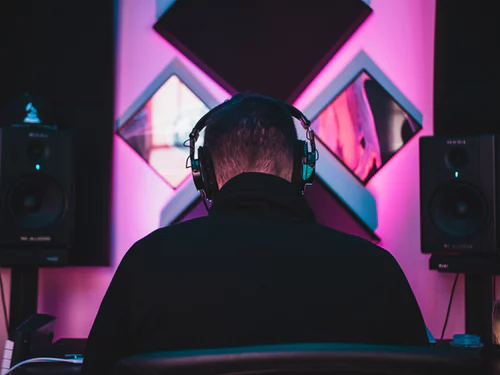
Listen to the Mixes on Regular Speakers
If you have mixed your song at two different volume levels and are satisfied with what it sounds like, it is important that you go one step further and listen to the mix on a set of regular speakers to get a more well-rounded look into how the mix sounds to a layman.
This helps in giving your song balance and translatability, which finally allows for a more vividly put together track. This will give you great insight into what the mix sounds like in the real environment and to the regular listener.
Use a Second Pair of Headphones
A lot of people talk about how important it is to monitor your mix through more than one set of speakers but what they miss out on is that you can do the same with different sets of headphones as well.
For mixing engineers, this translates to listening to the same audio with many different sets of listening equipment — ranging from some of the best quality headphones to the cheaper earbuds that you can buy in airports or local shops. It is important that you find yourself in a quiet environment and listen to the mix.
If you have a really well-mixed track, it should fare well in tests across listening platforms. Your studio headphones will play a huge role in how this track comes out and fares in front of a larger audience.
For this reason, it is of great importance that you understand all the basics there are to know about studio headphones and how to mix your music using these headphones in the most effective manner.
After going through this guide, you will also find yourself better equipped to make a decision about what are the basic factors that need to be kept in mind while mixing tracks.
If your track has been mixed using all the tips and tricks that we mentioned above, it is highly likely that the people who listen to these tracks — whether it is on headphones, earbuds or a full-scale speaker — are able to get an insight into your thought process.


![5 Best Open Ear Headphones [Reviews & Buyer’s Guide] akg best open back headphones](https://homestudiohub.com/wp-content/uploads/2020/03/null-7-218x150.png)
![5 Best Closed-Back Headphones [Reviews & Buyer’s Guide] Closed back headphones](https://homestudiohub.com/wp-content/uploads/2020/03/null-19-218x150.jpeg)
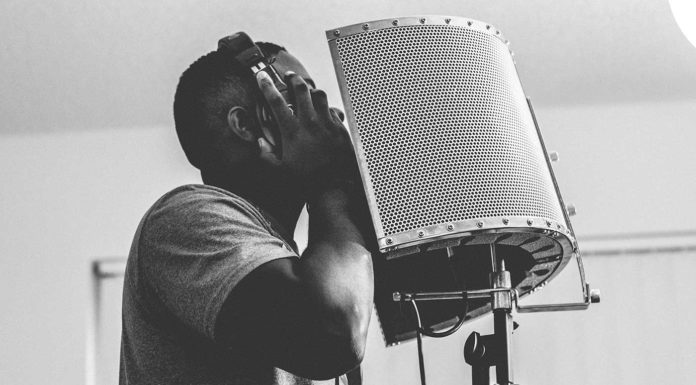





![5 Best Closed-Back Headphones [Reviews & Buyer’s Guide] Closed back headphones](https://homestudiohub.com/wp-content/uploads/2020/03/null-19-80x60.jpeg)

